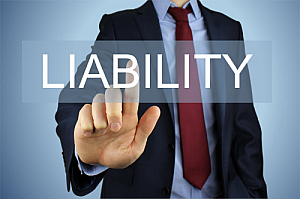
A Tour of the Assets
There are a lot of terms and numbers in this monetary record that might be
different to you. You've likely heard the old joke: "How would you eat an
elephant?" Reply: "Each chomp in turn.
Note that despite the fact that our example monetary record and the
accompanying rundown are not comprehensive, it presents the resources
normally found on the accounting report of a business or modern
organization, like a retailer or producer. Monetary administration
organizations, like banks, and organizations in particular ventures, for
example, power-producing or oil refining, have their own particular sorts of
resources what's more. The resources we cover here are the standard ones in
many organizations.
Cash
Cash implies the money in the organization's checking and bank accounts and
in trivial money. Frequently you will see cash and attractive protections
together on one line of a monetary record.
Marketable Securities
Attractive protections are momentary ventures, as a rule in U.S. government
protections or the business paper of different firms. The protections have
short developments and stable costs. Due to their liquidity, these
protections are alluded to as approach cash resources. Organizations put
cash in attractive protections since they frequently procure higher premiums
than checking or bank accounts acquire.
Attractive protections are displayed on the asset report at "the lower of
cost or market," importance at their unique expense the value the
organization paid for them or the ongoing business sector cost, assuming
that it is lower. This keeps the worth displayed for these resources
moderate. Frequently when the protections are displayed at cost and the
ongoing business sector esteem is higher, that ongoing worth will be
displayed in enclosures or in a reference to the budget report.
Accounts Receivable and Bad Debt
Money due are sums owed by clients who have bought labor and products from
the organization on exchange credit. In Section 15, "Spending Plan
Essentials," I will look at credit for the executives, which is vital on the
grounds that a few clients cover their bills more rapidly than others.
Tragically, some don't pay by any means thus the remittance for terrible
obligation noted on the asset report. This recompense is a contra account
set up to collect a sum for those records receivable (or receivables) that
will eventually be uncollectible.
The organization knows that the same rate (2% or so in many lines of
business) of records receivable will be uncollectible. At the hour of the
deal, the organization saves this sum for awful obligation costs.
Inventories
Inventories are products available to be purchased by clients or merchandise
in the assembling system at the time the asset report is ready.
A maker will normally have three sorts of stock: unrefined substances, work
in process, and wrapped-up merchandise. Unrefined components are merchandise
that the organization bought to make its items, while work in process is as
of now someplace in the assembling system, as the name suggests. Work in
process is much of the time called incomplete products. Completed
merchandise are products anticipating deals.
A retailer has stock and no unrefined components or works in the process
since it just trades completed products.
Administration organizations commonly don't sell merchandise (besides as a
sideline; for instance, when boutiques sell hair-care items) so they
generally have negligible or no stock on their monetary records.
Property, Plant, and Equipment
Property, plant, and gear allude to the structures (workplaces, industrial
facilities, stockrooms, etc) and hardware (apparatus, furniture, and
installations, for example, lighting and showcases) claimed by the
organization. Frequently you will see different components of property,
plant, and hardware broken out independently, for instance, structures and
gear, or structures and installations and furniture.

The Major Liabilities
Like resources, the sorts of liabilities recorded on the monetary record will
be a piece different for organizations in monetary administrations and
particular businesses. Be that as it may, the accompanying segments present
the most well-known liabilities for most kinds of firms.
Accounts Payable
Creditor liabilities, or payables, are the sums the organization owes to its
providers. (All in all, one organization's receivables are another's records
payable.)
Notes Payable
Notes payable can incorporate business paper or other promissory notes
(meaning a composed guarantee to pay) that address momentary borrowings of the
organization, meaning those payable in one year or less.
Accrued Expenses Payable
The gathered costs account summarizes all of the other cash that the
organization owes to organizations and people it works with, including
representatives and self-employed entities, lawyers and other external
experts, and utilities, for example, the electric and phone organizations who
have not been paid for administrations delivered on the date of the asset
report.
Federal Income and Other Taxes Payable
Each business that creates a gain should settle government personal duties
and, where relevant, state and city annual expenses. There are additional land
charges, extract charges, finance charges, and other business charges you
understand. Charges are gathered on the books until they're expected, and the
accumulated sum is displayed in this record.
Current Portion of Long-Term Debt
Recall the differentiation between current (or present moment) liabilities and
long-haul liabilities? Current liabilities are those payable in no less than a
year, with importance in no less than an extended time from the date of the
monetary record.
Consequently, the ongoing part of the long haul obligation is the piece long
haul obligation that is expected in the approaching year. For example, on the
off chance that the Example Organization required a three-year term credit on
December 31, 1998, the part of the credit that should be reimbursed in the
main year (that is, 1997) would be displayed in this record. The sum to be
reimbursed in the other two years would be displayed in the drawn-out
obligation account.
Long-Term Debt
A long-Term Debt obligation is all obligations due following one year from the
date of the asset report. This obligation generally addresses funding from
banks and bondholders.

